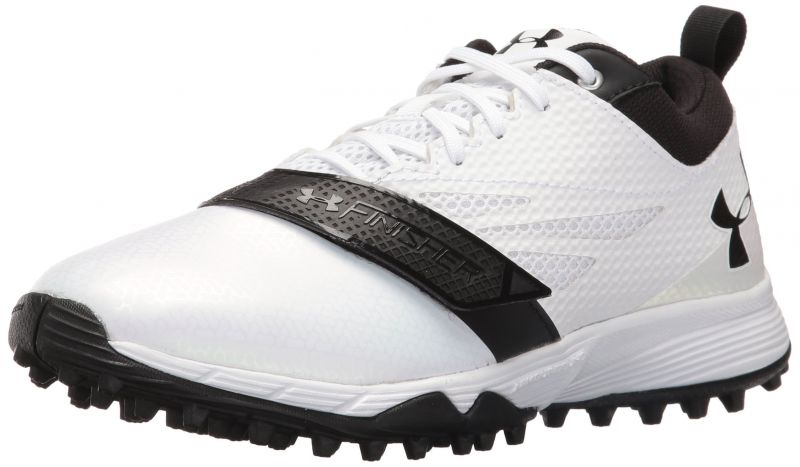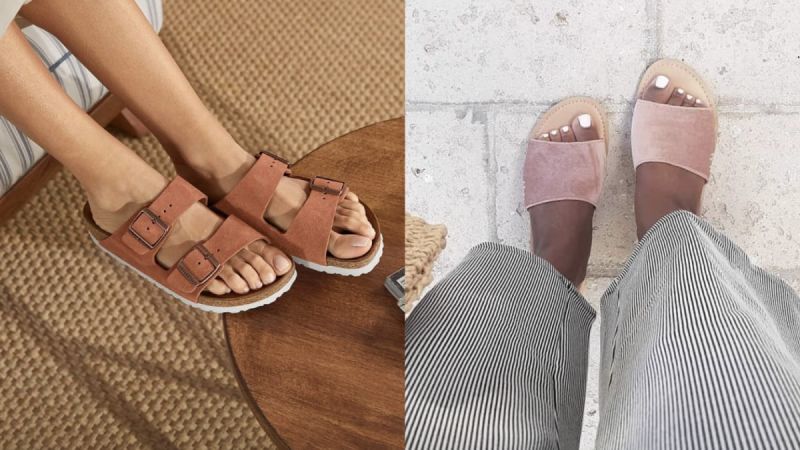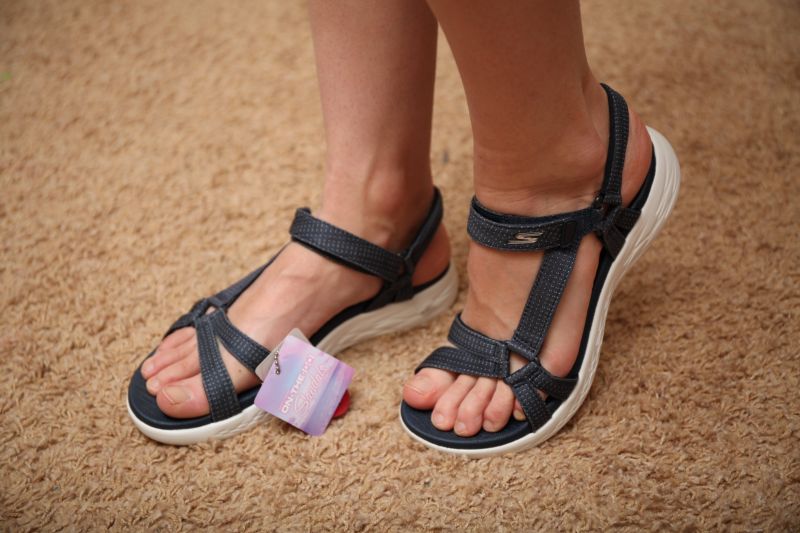Choose the Perfect Lacrosse Turf Shoes A GuideChoose the Perfect Lacrosse Turf Shoes A Guide
Choose Lightweight Construction for Agility in Your Lacrosse Turf Shoes
When selecting your lacrosse turf shoes, one of the most important factors to consider is the weight. You want shoes that are lightweight and won’t weigh you down as you run up and down the field. The average midfielder runs up to 5 miles per game, so having shoes that are light and breathable can make a big difference in your energy levels and performance.
Look for turf shoes made with synthetic leather or mesh uppers rather than heavy materials. Many brands now use ultra-lightweight synthetic materials that are durable yet extremely lightweight. This reduces the overall weight of the shoe so your feet won’t feel bogged down.
In addition, look for shoes with minimal exterior overlays. Things like excessive logos, plastic pieces, and heavy reinforcement add unnecessary weight. The cleaner and simpler the shoe design, the lighter it will be.
You’ll also want to examine the midsole material. Ethylene vinyl acetate (EVA) is a common lightweight foam material used in many athletic shoe midsoles. Along with being lightweight, it is also responsive and provides good cushioning. Some brands may use proprietary midsole foams with similar lightweight properties.
Finally, look for turf shoes with thin, flexible outsoles rather than thick, heavy rubber. A flexible outsole allows your foot to move and bend naturally as you cut and pivot on the field. Thin outsoles also reduce overall weight. Look for flex grooves and cuts in the bottom of the sole to allow for flexibility.
The lighter your shoes, the less energy you’ll expend just carrying them around the field. This leaves you fresher for those key late game moments when agility and speed are at a premium. So be sure to compare weights as you shop for your next pair of lacrosse turf shoes. The lighter models will give you an edge out there.
Consider High-Top Designs for Ankle Support in Your Lacrosse Turf Shoes
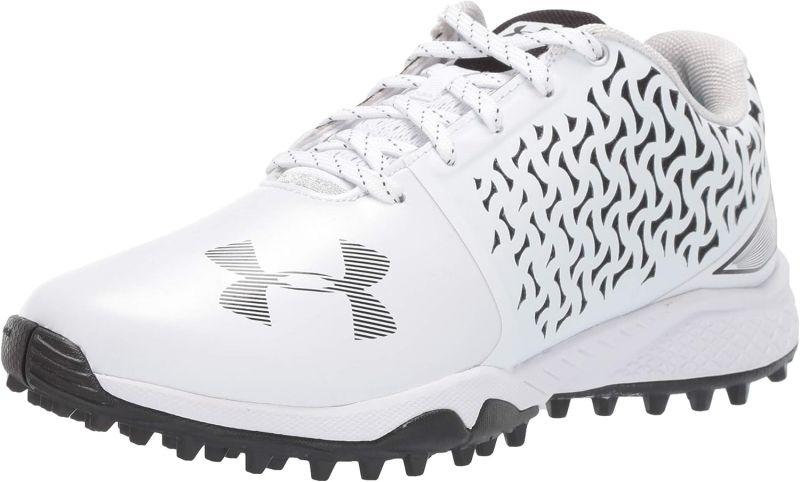
When shopping for lacrosse turf shoes, one key feature to evaluate is the collar height. Lacrosse involves a lot of quick cuts, pivots, and change of direction. This aggressive movement puts a lot of stress on your ankles. Choosing turf shoes with a high-top collar design can help provide extra stability and prevent ankle injury.
Look for shoes with collars that extend up and hug your ankle. This provides reinforcement against inversion or eversion sprains that can occur from sudden lateral motions. The collar helps lock the heel in place inside the shoe, providing a stable anchor point for the ankle during sharp cuts.
In addition, high collar shoes integrate the tongue and lacing system with the ankle collar. This creates a more enveloped fit around the midfoot and ankle. The integrated lacing allows you to customize the lockdown feel and get the collar nice and snug around your ankle before going out on the field.
Many high-top turf shoes also incorporate supportive thermoplastic polyurethane (TPU) heel counters. This rigid material cups the back and sides of the heel, reinforcing the entire rearfoot area for greater stability. It prevents the ankle from rolling and provides lateral support during cuts.
Cushioned foam or synthetic leather ankle collars can also enhance comfort in a high-top model. This soft, padded interior lining prevents any rubbing or abrasion against your ankle bone while providing a smooth, non-irritating feel.
So if you are prone to ankle injuries, or simply want to minimize your risk when moving aggressively on the field, look for lacrosse turf shoes with a high-top silhouette. The extended ankle coverage and enhanced support these shoes provide can give you the confidence to play hard while minimizing the chance of a rolled or sprained ankle.
Opt for Durable Rubber Soles with Deep Cleats for Traction
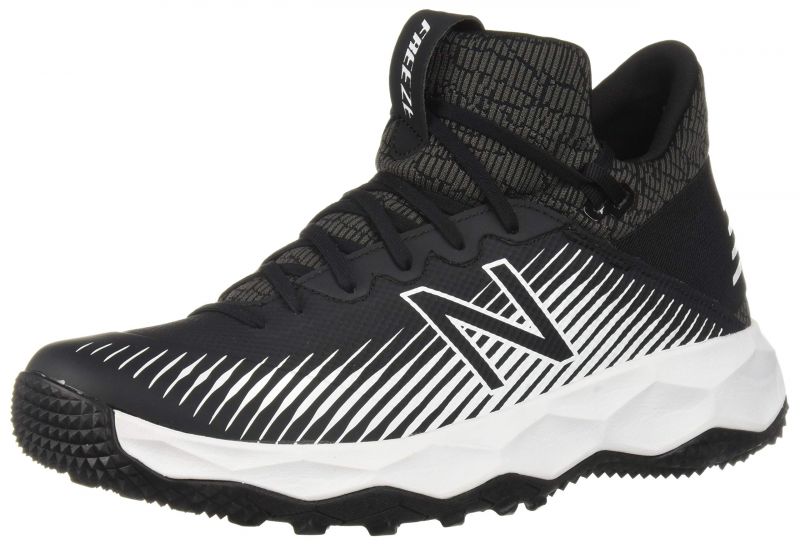
One of the most vital elements of any lacrosse turf shoe is the outsole. The outsole provides traction and grip for quick accelerations, cuts, and stops on the artificial turf playing surface. When shopping for lacrosse shoes, look for turf models with durable rubber outsoles featuring aggressive cleat patterns.
Rubber is an ideal outsole material for turf shoes because it is extremely durable. Rubber withstands abrasion from the turf surface far better than materials like foam or lightweight plastics. Rubber also retains its properties in varying temperatures, staying grippy in both heat and cold.
In addition to a durable rubber compound, you want deep cleats that can penetrate through to the subsurface beneath the turf fibers. This provides resistance against sliding so you can pivot and push off confidently. The cleats should be evenly distributed across the outsole and include cleats along the perimeter for optimal traction at the toe and heel.
Look for turf shoes with cleats that are narrow and closely spaced. Narrow cleats allow for more points of penetration into the turf, enhancing grip. Closely spaced cleats prevent turf pellets from becoming compacted in the outsole, which can reduce traction over time.
Some brands also offer removable cleats on some models. This allows you to use longer cleats for more grip outdoors and shorter cleats on ultra-firm indoor turf surfaces. Just ensure the cleat system is secure and replaces easily.
Traction is crucial for lacrosse performance. A grippy rubber outsole with an aggressive cleat pattern allows you to move on the field with confidence and agility. So inspect the outsoles closely when selecting your next pair of lacrosse turf shoes. Opting for proper traction helps maximize your quickness and minimize slip-outs.
Choose Shoes with Padded Collars for Comfort
Materials That Make a Difference
When searching for lightweight lacrosse turf shoes, pay attention to the materials used in their construction:
- Uppers: Opt for synthetic leather or mesh for durability and breathability
- Midsoles: Look for Ethylene Vinyl Acetate (EVA) or proprietary lightweight foams
- Outsoles: Seek thin, flexible designs with flex grooves for natural foot movement
Minimalist designs with fewer overlays and simpler aesthetics often translate to lighter shoes. Remember, the goal is to find a balance between lightweight construction and necessary support for the demands of lacrosse.
High-Top Designs: Superior Ankle Support for Aggressive Play
Lacrosse is a sport characterized by quick cuts, pivots, and rapid directional changes. These movements put significant stress on players’ ankles, making proper support crucial. High-top lacrosse turf shoes offer enhanced stability and can help prevent ankle injuries. But what specific features should you look for in high-top designs?

Key Components of Supportive High-Top Shoes
- Extended collar that hugs the ankle
- Integrated tongue and lacing system for a customized fit
- Thermoplastic polyurethane (TPU) heel counters for lateral support
- Cushioned foam or synthetic leather ankle collars for comfort
These features work together to create a stable anchor point for your ankle, reducing the risk of inversion or eversion sprains during aggressive play. For players prone to ankle injuries or those seeking extra protection, high-top lacrosse turf shoes are an excellent choice.
Traction Matters: The Importance of Durable Rubber Soles and Deep Cleats
Traction is paramount in lacrosse, allowing players to accelerate, cut, and stop with confidence on artificial turf. The outsole of your lacrosse turf shoes plays a crucial role in providing this essential grip. What should you look for in an outsole to ensure optimal traction?
Characteristics of High-Performance Outsoles
- Durable rubber compound resistant to abrasion
- Deep, narrow cleats for penetrating turf fibers
- Even distribution of cleats across the outsole
- Cleats along the perimeter for toe and heel traction
Rubber outsoles excel in varying temperatures, maintaining their grip in both hot and cold conditions. The deep, narrow cleats allow for better penetration of the turf surface, providing resistance against sliding and enabling confident pivots and push-offs.

Ensuring Proper Fit and Comfort: The Foundation of Performance
While features like lightweight construction, ankle support, and traction are crucial, the importance of a proper fit cannot be overstated. Ill-fitting shoes can lead to discomfort, reduced performance, and even injuries. How can you ensure your lacrosse turf shoes fit correctly?
Tips for Finding the Perfect Fit
- Measure your feet at the end of the day when they’re slightly swollen
- Try on shoes with the socks you’ll wear during games
- Ensure about a thumb’s width of space between your longest toe and the shoe’s end
- Check for snugness in the midfoot and heel without pinching
- Walk and jog in the shoes to test comfort and stability
Remember, different brands may have slightly different sizing. Don’t hesitate to try multiple sizes or styles to find the perfect fit. A well-fitting shoe will enhance your performance and reduce the risk of blisters and other foot-related issues.
Position-Specific Features: Tailoring Your Turf Shoes to Your Role
Different positions in lacrosse have varying demands, and your choice of turf shoes should reflect these specific needs. What features should players in different positions prioritize when selecting their footwear?

Attackers and Midfielders
These positions require quick acceleration and frequent direction changes. Look for:
- Lightweight construction for agility
- Flexible outsoles for quick pivots
- Low-to-mid cut designs for ankle mobility
Defenders
Defenders need stability and support for lateral movements. Prioritize:
- High-top designs for ankle support
- Durable outsoles for aggressive play
- Reinforced toe boxes for added protection
Goalies
Goalkeepers require a balance of stability and quick reflexes. Look for:
- Mid-to-high cut shoes for ankle support
- Lightweight designs for quick movements
- Enhanced cushioning for repeated impacts
By considering your position’s specific demands, you can select turf shoes that complement your playing style and enhance your performance on the field.
Balancing Durability and Flexibility: The Perfect Compromise
Lacrosse turf shoes must withstand the rigors of intense play while allowing for natural foot movement. How can you find the right balance between durability and flexibility in your footwear?

Key Factors to Consider
- Material selection: Synthetic leather offers durability, while mesh provides flexibility
- Reinforced high-wear areas: Look for additional protection in the toe and heel
- Flex grooves in the outsole: These allow for natural foot movement
- Strategic use of rigid and flexible materials: Combines support and movement
The ideal lacrosse turf shoe should be able to withstand the demands of the game without restricting your foot’s natural motion. Look for shoes that incorporate durable materials in high-wear areas while maintaining flexibility in key flex points.
Injury Prevention: The Role of Specialized Lacrosse Turf Shoes
Proper footwear is a crucial component of injury prevention in lacrosse. How do specialized turf shoes contribute to player safety on the field?
Injury Prevention Features in Lacrosse Turf Shoes
- Ankle support: Reduces the risk of sprains and twists
- Proper cushioning: Absorbs impact and reduces stress on joints
- Traction: Prevents slips and falls on artificial turf
- Proper fit: Minimizes blisters and other foot-related issues
- Stability features: Helps maintain proper alignment during play
Investing in high-quality, specialized lacrosse turf shoes can significantly reduce your risk of both acute injuries and chronic issues related to repetitive stress. Remember, the right shoes are not just about performance – they’re an essential part of your protective equipment.

Maintenance and Care: Extending the Life of Your Lacrosse Turf Shoes
Proper care and maintenance of your lacrosse turf shoes can extend their lifespan and ensure consistent performance. What are some essential tips for keeping your shoes in top condition?
Best Practices for Shoe Care
- Clean shoes after each use to remove dirt and debris
- Allow shoes to air dry naturally, away from direct heat sources
- Use a soft brush to clean the outsoles and remove trapped turf fibers
- Rotate between multiple pairs of shoes if possible to extend their life
- Replace insoles regularly to maintain cushioning and support
Regular maintenance not only prolongs the life of your shoes but also ensures they continue to provide the support, traction, and comfort you need on the field. Treat your lacrosse turf shoes as an investment in your performance and safety.
Adapting to Your Turf Shoes: Tips for a Smooth Transition
Switching to new lacrosse turf shoes or trying a different style can require an adjustment period. How can you ensure a smooth transition and get the most out of your new footwear?

Strategies for Breaking In New Shoes
- Wear them for short periods initially, gradually increasing duration
- Practice drills and movements specific to your position
- Pay attention to any discomfort and address it promptly
- Use athletic tape or moleskin on potential friction points
- Be patient – it may take a few sessions to fully adapt
Remember, even the best lacrosse turf shoes may feel slightly different from what you’re used to. Give yourself time to adapt, and don’t hesitate to make minor adjustments to achieve the perfect fit and feel.
The Impact of Playing Surface: Turf vs. Natural Grass Considerations
While this guide focuses on turf shoes, it’s important to understand how different playing surfaces can affect your footwear choices. How do the demands of artificial turf differ from natural grass, and what does this mean for your shoe selection?
Key Differences Between Turf and Grass Shoes
- Cleat length: Turf shoes have shorter, more numerous cleats
- Outsole material: Turf shoes often use softer rubber for better grip
- Flexibility: Turf shoes are generally more flexible than grass cleats
- Weight: Turf shoes are often lighter due to less aggressive cleats
If you frequently play on both turf and natural grass, consider investing in shoes specifically designed for each surface. This ensures optimal performance and reduces the risk of injury regardless of the playing conditions.

Budget Considerations: Balancing Cost and Quality in Lacrosse Turf Shoes
High-quality lacrosse turf shoes can be a significant investment. How can players balance the need for performance features with budget constraints?
Strategies for Smart Shoe Shopping
- Prioritize essential features based on your position and playing style
- Look for last season’s models, which often offer great value
- Consider the durability and lifespan when assessing cost
- Explore different brands to find the best balance of features and price
- Invest in proper care to extend the life of your shoes
Remember, the most expensive shoes aren’t always the best fit for your needs. Focus on finding shoes that offer the right combination of features for your game, even if it means compromising on brand name or aesthetics.
The Future of Lacrosse Turf Shoes: Emerging Technologies and Trends
The world of athletic footwear is constantly evolving, with new technologies and design philosophies emerging regularly. What trends and innovations can we expect to see in lacrosse turf shoes in the coming years?

Potential Advancements in Lacrosse Footwear
- 3D-printed components for customized fit and performance
- Advanced cushioning materials for improved shock absorption
- Smart sensors for real-time performance tracking
- Sustainable materials and manufacturing processes
- Adaptive traction systems for varying surface conditions
While some of these technologies may still be in development, they highlight the ongoing efforts to improve lacrosse turf shoes. Staying informed about these advancements can help you make future-proof choices when selecting your footwear.
As we conclude this comprehensive guide to choosing the perfect lacrosse turf shoes, remember that the ideal shoe is one that meets your specific needs, fits well, and allows you to perform at your best. Consider the factors we’ve discussed – from lightweight construction and ankle support to traction and position-specific features – and take the time to find the shoes that will elevate your game on the lacrosse field.
Choose Lightweight Construction for Agility in Your Lacrosse Turf Shoes
When selecting your lacrosse turf shoes, one of the most important factors to consider is the weight. You want shoes that are lightweight and won’t weigh you down as you run up and down the field. The average midfielder runs up to 5 miles per game, so having shoes that are light and breathable can make a big difference in your energy levels and performance.
Look for turf shoes made with synthetic leather or mesh uppers rather than heavy materials. Many brands now use ultra-lightweight synthetic materials that are durable yet extremely lightweight. This reduces the overall weight of the shoe so your feet won’t feel bogged down.
In addition, look for shoes with minimal exterior overlays. Things like excessive logos, plastic pieces, and heavy reinforcement add unnecessary weight. The cleaner and simpler the shoe design, the lighter it will be.
You’ll also want to examine the midsole material. Ethylene vinyl acetate (EVA) is a common lightweight foam material used in many athletic shoe midsoles. Along with being lightweight, it is also responsive and provides good cushioning. Some brands may use proprietary midsole foams with similar lightweight properties.
Finally, look for turf shoes with thin, flexible outsoles rather than thick, heavy rubber. A flexible outsole allows your foot to move and bend naturally as you cut and pivot on the field. Thin outsoles also reduce overall weight. Look for flex grooves and cuts in the bottom of the sole to allow for flexibility.
The lighter your shoes, the less energy you’ll expend just carrying them around the field. This leaves you fresher for those key late game moments when agility and speed are at a premium. So be sure to compare weights as you shop for your next pair of lacrosse turf shoes. The lighter models will give you an edge out there.
Consider High-Top Designs for Ankle Support in Your Lacrosse Turf Shoes

When shopping for lacrosse turf shoes, one key feature to evaluate is the collar height. Lacrosse involves a lot of quick cuts, pivots, and change of direction. This aggressive movement puts a lot of stress on your ankles. Choosing turf shoes with a high-top collar design can help provide extra stability and prevent ankle injury.
Look for shoes with collars that extend up and hug your ankle. This provides reinforcement against inversion or eversion sprains that can occur from sudden lateral motions. The collar helps lock the heel in place inside the shoe, providing a stable anchor point for the ankle during sharp cuts.
In addition, high collar shoes integrate the tongue and lacing system with the ankle collar. This creates a more enveloped fit around the midfoot and ankle. The integrated lacing allows you to customize the lockdown feel and get the collar nice and snug around your ankle before going out on the field.
Many high-top turf shoes also incorporate supportive thermoplastic polyurethane (TPU) heel counters. This rigid material cups the back and sides of the heel, reinforcing the entire rearfoot area for greater stability. It prevents the ankle from rolling and provides lateral support during cuts.
Cushioned foam or synthetic leather ankle collars can also enhance comfort in a high-top model. This soft, padded interior lining prevents any rubbing or abrasion against your ankle bone while providing a smooth, non-irritating feel.
So if you are prone to ankle injuries, or simply want to minimize your risk when moving aggressively on the field, look for lacrosse turf shoes with a high-top silhouette. The extended ankle coverage and enhanced support these shoes provide can give you the confidence to play hard while minimizing the chance of a rolled or sprained ankle.
Opt for Durable Rubber Soles with Deep Cleats for Traction

One of the most vital elements of any lacrosse turf shoe is the outsole. The outsole provides traction and grip for quick accelerations, cuts, and stops on the artificial turf playing surface. When shopping for lacrosse shoes, look for turf models with durable rubber outsoles featuring aggressive cleat patterns.
Rubber is an ideal outsole material for turf shoes because it is extremely durable. Rubber withstands abrasion from the turf surface far better than materials like foam or lightweight plastics. Rubber also retains its properties in varying temperatures, staying grippy in both heat and cold.
In addition to a durable rubber compound, you want deep cleats that can penetrate through to the subsurface beneath the turf fibers. This provides resistance against sliding so you can pivot and push off confidently. The cleats should be evenly distributed across the outsole and include cleats along the perimeter for optimal traction at the toe and heel.
Look for turf shoes with cleats that are narrow and closely spaced. Narrow cleats allow for more points of penetration into the turf, enhancing grip. Closely spaced cleats prevent turf pellets from becoming compacted in the outsole, which can reduce traction over time.
Some brands also offer removable cleats on some models. This allows you to use longer cleats for more grip outdoors and shorter cleats on ultra-firm indoor turf surfaces. Just ensure the cleat system is secure and replaces easily.
Traction is crucial for lacrosse performance. A grippy rubber outsole with an aggressive cleat pattern allows you to move on the field with confidence and agility. So inspect the outsoles closely when selecting your next pair of lacrosse turf shoes. Opting for proper traction helps maximize your quickness and minimize slip-outs.
Choose Shoes with Padded Collars for Comfort
One factor that can set turf lacrosse shoes apart in terms of comfort is the padding around the collar. A padded collar helps prevent rubbing and irritation where the shoe meets your ankle and Achilles tendon area. When trying on shoes, look for ample interior padding in the collar region.
The ideal collar padding consists of soft, compressible foam or synthetic leather. The padding should fully line the interior of the ankle collar, extending down to surround the Achilles notch area. This creates a smooth, non-abrasive surface rather than stiff, unlined material rubbing against your ankle bone and tendon.
In high-top shoe designs, padding is even more critical. The collar extends higher on the ankle so padding prevents irritation from having material wrapped tightly around your ankle. High-top shoes with exposed stiff fabric or plastic collars can irritate and rub the ankle bone during play.
Padded collars also enhance the comfort experience right out of the box. There is no break-in period of stiffness and rubbing before the material softens. Collar padding provides instant step-in comfort so your shoes feel great from day one.
Additionally, many brands incorporate memory foam or ortholite into collar linings. These materials provide enhanced cushioning and conform to the unique shape of your ankle for personalized comfort and support.
Don’t just overlook the collar region when shopping for turf shoes. Opt for lacrosse models with amply padded collars lined in soft, supple material. Your ankles and Achilles will thank you over the course of a long game or tournament when you choose shoes with comfortable, non-irritating padding around the openings.
Go for Integrated Midsole Cushioning to Absorb Impact
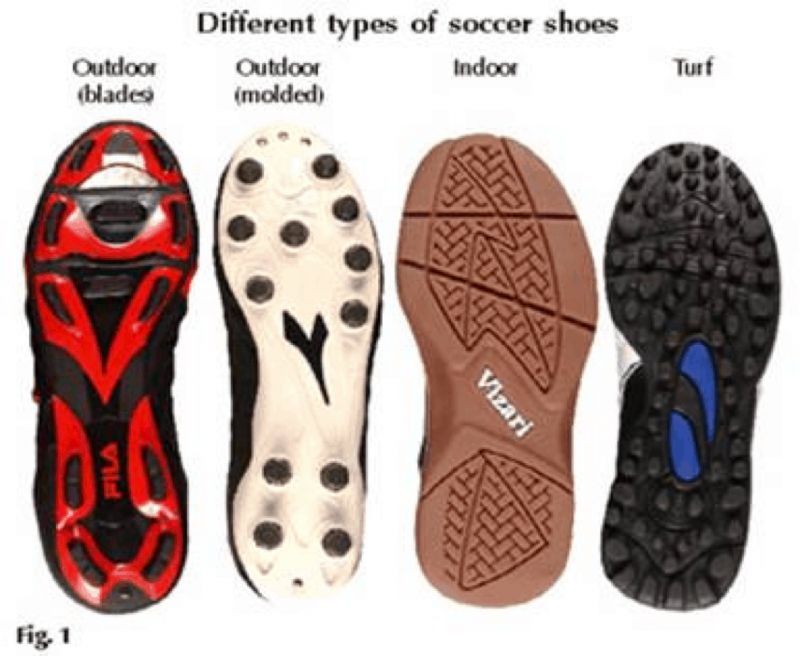
The midsole is a critical component when evaluating lacrosse turf shoes for comfort and performance. As the layer between your foot and the ground, the midsole needs to provide cushioning and shock absorption. When shopping for shoes, look for models with an integrated midsole that runs the full length of the shoe.
A full-length midsole allows for smooth heel to toe transitions. Your foot lands on a consistent cushioned surface rather than falling from a soft heel onto a firm forefoot or midfoot area. Full contact with cushioning reduces impact shock travelling up your legs with each running stride.
In terms of cushioning materials, EVA foam is commonly used in athletic shoe midsoles. EVA provides a soft, springy ride and retains its properties over time. Some brands may also utilize proprietary midsole foams with similar shock-attenuating characteristics.
Another advanced cushioning technology found in some lacrosse shoes is charged cushioning. This incorporates compressed foam capsules in the midsole that spring back quickly after compression. The responsive rebound effect provides a propulsive toe-off on each stride.
You can also find options like Air units and gel inserts layered into some midsoles. These offer localized cushioning and shock absorption in key areas like the heel and forefoot. Removable insoles can also enhance comfort and support.
Don’t just look at the outsole when evaluating new turf shoes. A comfortable, integrated midsole is crucial for absorbing shock, preventing fatigue, and keeping you performing at your best. Seek out lacrosse models with midsoles engineered for your sport’s quick cuts and multidirectional movements.
Pick the Right Size for a Secure Fit
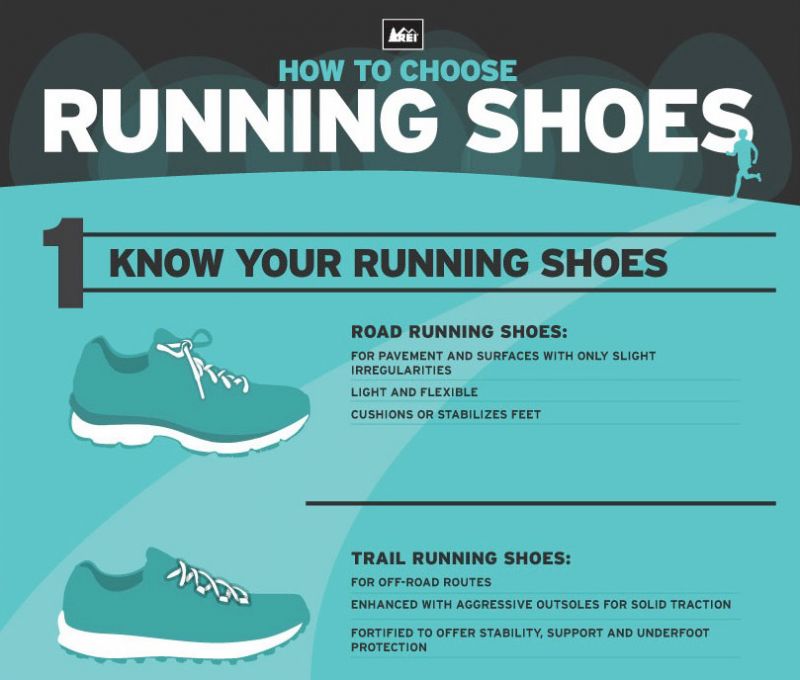
Getting the right size is critical when selecting new lacrosse turf shoes. The shoes need to fit snugly and securely around your feet to maximize performance. When trying on shoes, follow these tips to ensure you choose the optimal size:
Shop late in the day when your feet are at their largest after being on them all day. Feet naturally swell throughout the day, so you don’t want to base size off how shoes feel first thing in the morning. Trying shoes on at the end of the day provides an accurate read on fit.
Wear the type of socks you plan to wear for games and practices. The thickness of your socks impacts fit, so match them to get a true idea of how the shoes will feel on the field. Bring along your ankle braces, orthotics or other inserts you’ll use as well.
Do an on-feet test. Walk and jog around the store. Practice lateral movements like cuts and pivots. Lunge forward and do a few high knee drills. You want to mimic field movements to ensure the shoes provide a locked-in fit during dynamic lacrosse motions.
Ensure there is no heel slippage when moving. Your heel should feel secured in place, not lifting or sliding. A thin heel counter or lace locks at the top eyelets can help lock down the heel.
Make sure toes have some wiggle room and do not jam at the front. A half thumb width between the end of your toes and the shoe is ideal. Too little space can cause black toenails and blisters.
Consider sizing options. Many lacrosse shoes come in standard D/M widths but also offer narrow and wide sizes for a customized fit.
Finding your true size is essential for lacrosse shoes to deliver locked-in security during play. So take the time to test sizing and ensure the ideal fit before taking new shoes out on the field. Proper fit improves performance and helps prevent injury.
Compare Reputable Brands Known for Quality
When evaluating lacrosse turf shoes, it’s advisable to stick with reputable athletic brands known for quality and innovation. These companies have years of experience crafting performance shoes for sports like lacrosse. Here are some of the top brands to consider:
Nike – The Swoosh is synonymous with quality athletic footwear. They offer a variety of lacrosse turf shoes in their Nike Huarache and Alpha lineups. Models feature bold style with excellent traction and support.
Adidas – This global brand is a leader in cutting-edge performance technologies. Their lacrosse shoes utilize grippy TRAXION outsoles, energy-returning Bounce midsoles and ankle-hugging collars for ideal fit.
Under Armour – Known for “click-clack” cleats, UA lacrosse shoes deliver lightweight power and quick cuts. Features like clutchfit ankles and charged cushioning enhance lockdown and energy return.
Warrior – With roots in lacrosse equipment, Warrior offers turf and cleat models designed for the sport. Shoes feature directional traction zones and integrated lacing for ankle stability during cuts.
New Balance – The New Balance Freeze and Burn lines incorporate fresh foam midsoles and NDurance rubber outsoles for elite-level comfort and durability. Anatomical lasts provide a natural fit.
These major players devote significant R&D resources into shoe technologies to give athletes a performance edge. Their expertise in crafting durable, supportive shoes can help take your game to the next level.
While you’ll pay more for big brand name shoes, the proven performance and innovation is worth the investment for serious lacrosse athletes. Just be sure to also consider fit and design features when choosing your shoes.
Test Different Styles to Match Your Position and Play Style
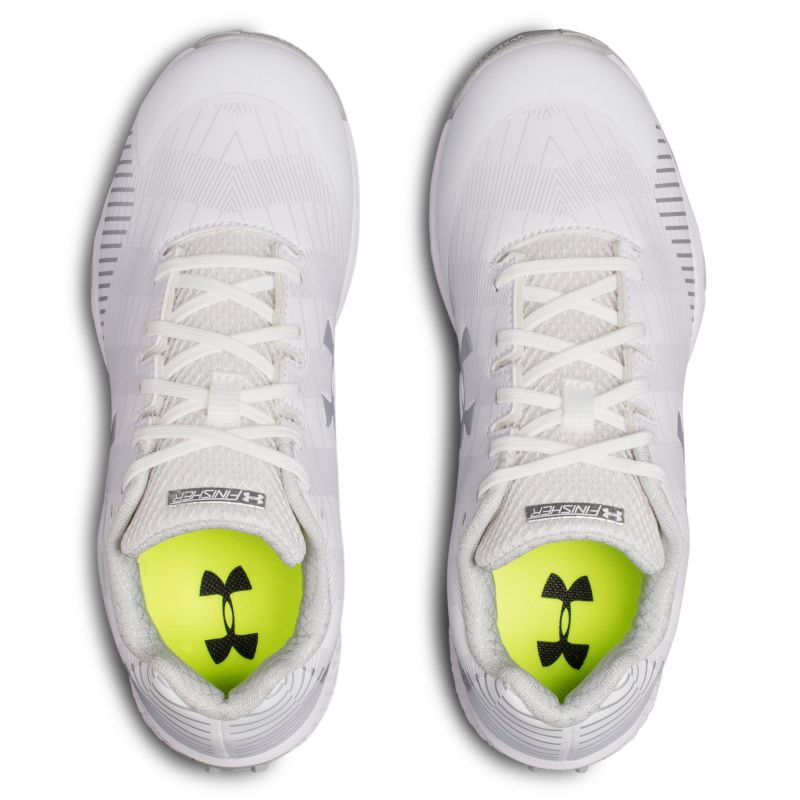
Lacrosse turf shoes come in a variety of styles, from low-top to mid-cut to high-top. Each design has benefits depending on your position and type of play. When selecting shoes, consider your individual needs:
Low-tops provide freedom of movement and flexibility for quick dodges and cuts. The low collar allows ankles to move freely through their full natural range of motion. Low tops suit speedy attackmen and middies focused on quickness.
Mid-tops offer a middle ground between mobility and support. The slightly higher collar locks the heel in place while still allowing decent mobility. Midfielders benefit from the blend of agility and stability.
High-tops maximize ankle coverage and stability for defenders constantly jockeying for ground balls. The high collar hugs the ankle to prevent inversion sprains on lateral cuts. The ultra-supportive fit also suits bigger, heavier players.
Consider extra ankle padding if you choose low or mid-top shoes. This helps compensate for the lower collar height. Removable ankle braces also enhance support in low-top models.
Also look for integrated tongue-and-collar designs that wrap the midfoot and ankle in a seamless bootie for better lockdown in all shoe types.
Trying on different lacrosse shoe styles allows you to feel the fit and freedom of movement. Opt for the height that best matches your position-specific needs and preferences. You want shoes that maximize your natural abilities without restricting movement.
Make Sure Shoes Have Good Traction for Cutting and Stopping
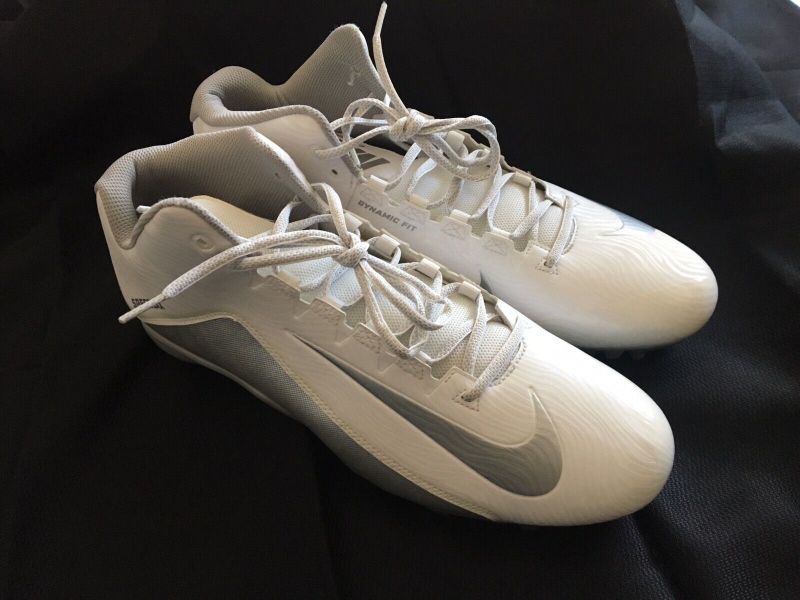
The ability to cut, pivot, and stop on a dime is critical in lacrosse, especially for midfielders. This requires turf shoes with excellent traction to grip the playing surface. When evaluating grip, consider these key features:
Multi-directional cleats – The outsole should have cleats running in multiple directions, not just front to back. This allows traction for lateral cuts as well as forward sprints.
Cleat configuration – Models with triangular or blade-style cleats provide optimal grip. The shape allows cleats to penetrate the turf in any direction.
Durability – Rubber outsoles withstand abrasion on artificial turf far better than foam or plastic compounds. Rubber retains its grippiness over time.
Flex grooves – Deep flex grooves along the forefoot promote natural foot bending for smoother cuts and pivots.
Heel and toe traction – Look for defined traction lugs or cleats along the perimeter of the outsole for grip during toe-offs and stops.
Test traction by making hard lateral cuts and stops during try-ons. The shoes should grip and resist sliding. Traction zones under the big toe and forefoot area are also ideal.
Slipping or loss of traction put you at a competitive disadvantage against quick-cutting opponents. So inspect the outsole design carefully before purchasing shoes to ensure excellent grip for your position.
Consider Removable Cleats for Versatility
Some lacrosse turf shoes now offer removable cleats as a versatile performance feature. Shoes with this capability allow you to tailor traction for different field conditions. Here’s how it works:
The outsole contains threaded sockets. Shorter, screw-in cleats for indoor turf screw into these sockets. For outdoor use, you can swap in longer cleats that dig deeper into natural grass for enhanced grip.
Being able to change cleats provides versatility across multiple surfaces:
- Shorter cleats for indoor artificial turf allow adequate traction without over-gripping the surface.
- Longer cleats on natural outdoor grass provide added penetration for grip on softer or muddy ground.
- Worn cleats can be replaced individually rather than needing new shoes.
When shopping, ensure the cleat system is high-quality and durable. The cleats should screw in securely and replace easily with the included cleat tool. Poorly designed removable cleats can loosen during play.
Also check that the cleat sockets allow optimal positioning and distribution of cleats for traction. You don’t want big gaps in the cleat pattern.
With the versatility to configure your traction, removable cleat shoes provide excellent value. One pair can deliver optimized grip across both indoor and outdoor surfaces. Just be diligent about swapping cleats as you transition between playing environments.
Read Reviews to Hear from Other Players
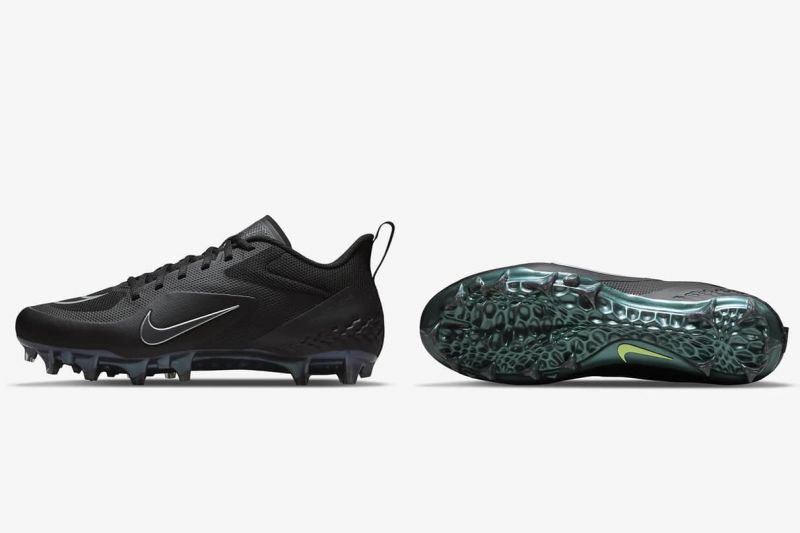
Before purchasing new lacrosse turf shoes, it’s advisable to read reviews from other players. Their first-hand feedback provides valuable insight into the fit, feel, and performance of different shoes. Here are some tips for getting the most out of reviews:
Look at multiple review sites to get a consensus across a wide range of players. Individual reviews can be subjective based on a person’s needs. But a consistent trend in overall ratings across sources indicates broader performance.
Pay attention to feedback on sizing. Some shoes may fit small or run large so sizing up or down may be necessary. This input can prevent you from ordering the wrong size.
Focus on reviews from verified buyers who played in the shoes. They provide more relevance than general product ratings. Also look for reviews from players in your position since needs differ.
Consider both the pros and cons mentioned rather than just positive reviews. Understanding possible downsides provides a balanced view and helps assess if negatives are dealbreakers for you.
Look for red flags like consistent reports of poor durability, lack of ankle support, or traction problems. Multiple issues could indicate an inferior product.
Check the shoe’s star rating or percentage of positive reviews as an overall indicator of satisfaction. Higher scores often correlate to better performance and quality.
Reading lacrosse shoe reviews saves you from wasted money on models that ultimately disappoint. Lean on the experience of fellow players to make an informed decision. Their insights can steer you toward the right shoes.
Check for Sales and Discounts to Save Money
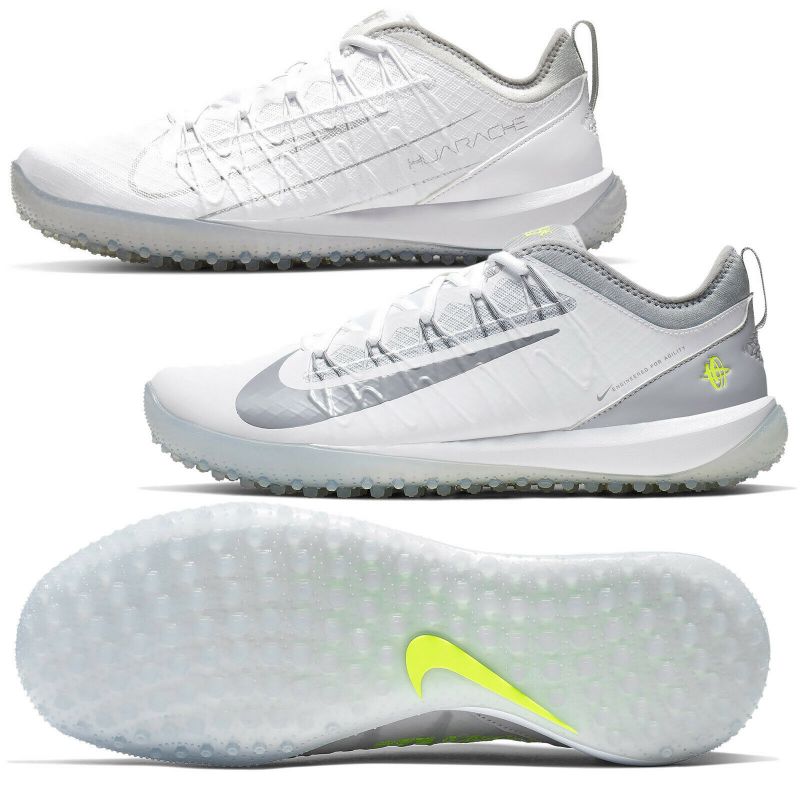
Lacrosse turf shoes from premium athletic brands can get pricey. But you can find ways to get quality shoes without overspending your budget:
– Shop end of season sales in winter. Retailers deeply discount leftover inventory to make room for new models arriving in spring. You can score substantial savings if you buy off-season.
– Sign up for brand emails. Companies will send discount codes and announce upcoming sales to subscribers. This gives you a jump on deals.
– Browse clearance sections. Online sites like Lacrosse Unlimited offer deals on discounted or last year’s colorways. You can find major price cuts if you don’t need the latest model.
– Take advantage of holiday sales around Memorial Day, July 4th, and Labor Day. Retailers promote lacrosse gear during these summer events.
– Check coupon sites for promotions like free shipping or 10% off orders. Little savings add up on big ticket items.
– Consider last year’s model. The upgrades are often minor. You can save a bundle on the previous season’s shoe.
– Buy used shoes in good condition to maximize value. Check resale sites for substantial savings.
With strategic shopping, you can grab top lacrosse brands for less. Invest time to find discounts so you get the shoes you need without overspending. Quality game-day footwear is worth the effort.
Break Shoes in Slowly to Prevent Blisters and Discomfort
Getting new turf shoes is exciting, but don’t rush into wearing them for full games right away. Gradual break-in helps the shoes mold to your feet, preventing painful blisters and discomfort. Follow these tips:
– Wear the shoes briefly at home to begin stretching them out before heavy activity. Do light walking or stationary drills for short periods.
– Bring other shoes and swap every 20-30 minutes during early practices. Use new shoes for individual drills then switch to broken-in ones for full scrimmages.
– Target only certain activities in the new shoes at first, like warm-ups or non-contact shooting drills. Slowly increase wear.
– Adjust laces to prevent pressure points. Lace loosely over irritated areas and snugly around the midfoot for security.
– Apply moleskin padding on blister-prone spots like the heels and pinky toes to relieve friction.
– Wear moisture-wicking socks that conform to your feet. Thick cotton socks can cause rubbing.
– Retie laces before the second half to account for foot swelling during play.
– Ice feet after practices while breaking shoes in to reduce inflammation.
Gradually easing into new shoes helps avoid painful blisters and hot spots. Prioritize comfort instead of style as you get the shoes game-ready. Break them in the right way so you perform your best all season long.
